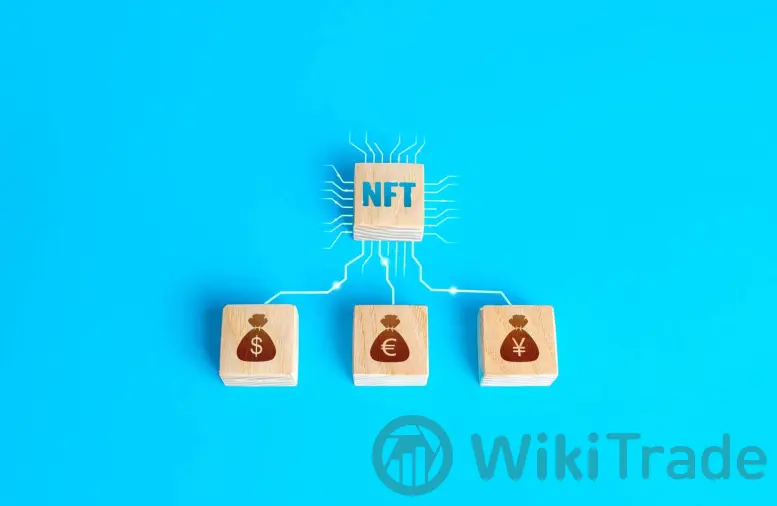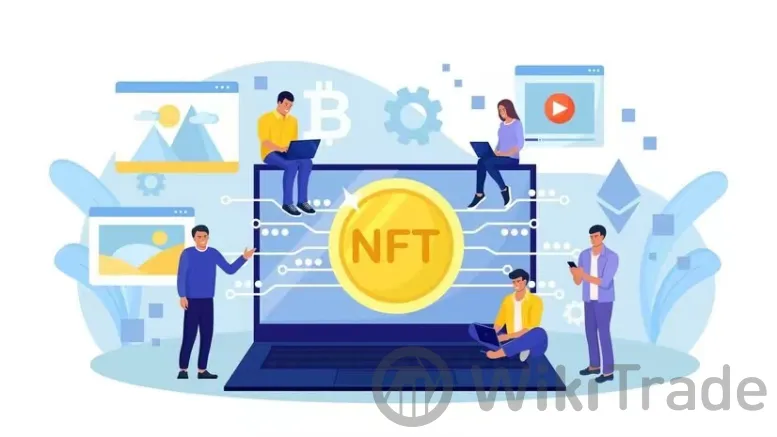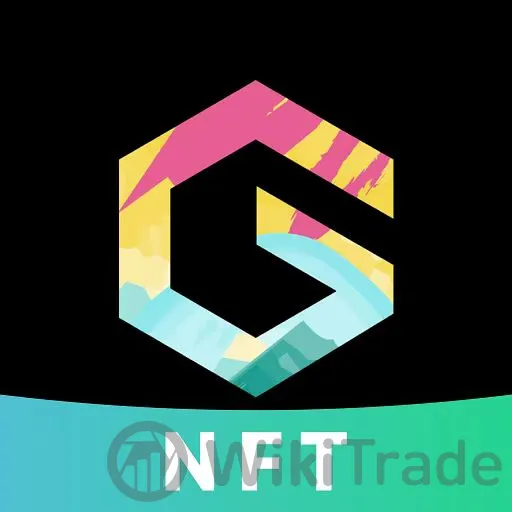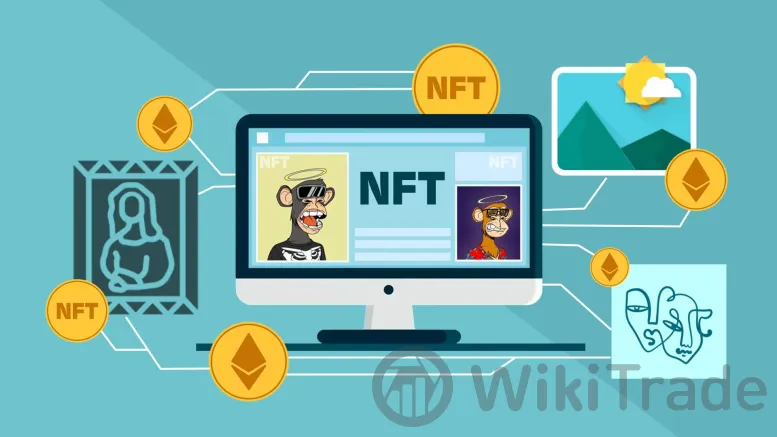GoArt Art NFT Creator
Abstract: GoArt is an innovative AI image generator that enables users to transform their photos into unique NFT art with various artistic styles. It offers a range of filters, including impressionism and styles reminiscent of famous painters like Van Gogh and Picasso, allowing users to add a creative twist to their ordinary photographs. GoArt's ease of use and high-definition output make it accessible for anyone to produce art that can be printed on various materials . Moreover, GoArt supports the minting of NFTs, providing a seamless experience for users to convert their AI-generated artwork into NFTs and trade them in the NFT market .
In the dynamic landscape of digital art, Non-Fungible Tokens (NFTs) have become a focal point of interest among artists and collectors alike. This article delves into how GoArt, an NFT art creation platform, facilitates the unleashing of creative potential while also examining its commercial value in the art market.
Non-fungible tokens (NFTs) represent a unique class of digital assets that signify ownership of works on the internet, encompassing art, music, and gaming projects. Distinct from traditional art, NFTs ensure the authenticity and indisputable ownership of digital works. These tokens are stored on blockchain technology, which provides a decentralized and secure ledger, recording each NFT's origin and transaction history. This system not only prevents duplication and forgery but also facilitates a transparent track of provenance and ownership, unlike any traditional art form.

Comparison Between NFT and Traditional Art
The divergence between NFT art and traditional art is pronounced, particularly in terms of creation, transaction, collection, and display:
Creation: Traditional art involves physical mediums such as canvas, paint, and sculpture, while NFT art is created digitally. The digital nature of NFTs allows artists to integrate motion, interactivity, and multimedia elements into their creations, expanding the scope of artistic expression.
Transaction: Buying and selling traditional art typically requires physical viewing, authentication, and often, intermediaries like galleries or auction houses. In contrast, NFTs are traded on digital platforms that are accessible to anyone with internet access. Transactions occur in digital currencies such as Ethereum, and each sale is recorded on the blockchain, ensuring transparency and security.
Collection: Collectors of traditional art must consider physical storage, conservation, and insurance. NFTs, however, are stored digitally and are impervious to damage, theft, or loss, provided the blockchain remains secure. This ease of maintenance and reduced overhead make NFTs an attractive option for new collectors.
Display: Displaying traditional art often involves galleries or personal physical space, which can be limiting. NFT art can be displayed virtually anywhere—from digital galleries and virtual worlds to digital frames and online platforms, allowing for a global audience reach without geographical barriers.
Initiating NFT Art Creation
Creation Tools and Platforms
Platforms like GoArt provide essential tools that enable artists to start creating NFTs from scratch. GoArt, in particular, offers a user-friendly interface that demystifies the NFT creation process. Artists can upload digital artworks and seamlessly convert them into NFTs by interacting with blockchain technology directly through the platform. GoArt also integrates digital editing tools that allow creators to adjust their art, apply filters, or embed metadata directly before minting. Moreover, educational resources provided by these platforms guide newcomers through the nuances of digital rights and blockchain transactions, making entry into the NFT world less daunting.
Sources of Design Inspiration
The realm of NFT art is highly influenced by current trends that blend elements from nature, technology, and popular culture. For inspiration, artists are turning to virtual reality environments to recreate intricate natural landscapes, utilizing augmented reality to overlay digital art into the physical world, and drawing from global pop culture phenomena to connect with broader audiences. Furthermore, generative art, where software algorithms create unique pieces based on predefined parameters, has become popular in the NFT space, pushing the boundaries of creativity and originality.

The Market and Transaction of NFT Art
Choosing the Right NFT Marketplace
The selection of an appropriate NFT marketplace is crucial for artists looking to sell their work. Marketplaces like OpenSea and Rarible dominate the scene, but they differ significantly in user base, transaction fees, and the types of digital assets they support. OpenSea offers a vast array of digital assets, making it a hub for diverse collections, whereas Rarible focuses more on exclusive art pieces, providing tools for artists to issue and sell limited editions. Evaluating these platforms involves considering their security features, ease of use, and how well they integrate with existing digital wallets and cryptocurrencies.
Pricing Strategies for Artworks
Pricing NFT art is a complex process influenced by factors such as rarity, the artist's reputation, and market demand. Artists must assess their position within the market, examining how similar works are priced and how their unique value propositions—such as digital provenance and creative merit—can justify their pricing. Engaging with the community and leveraging analytics tools offered by marketplaces can provide insights into pricing trends and buyer preferences. Additionally, artists might consider dynamic pricing models that allow prices to fluctuate based on market conditions, ensuring that their artworks remain competitive and appealing to potential buyers.

Legal and Copyright Issues
Navigating the intricate world of copyright through NFTs offers unique protections and challenges. When an artist mints an NFT, they essentially link their digital artwork with a blockchain entry that records ownership and provenance in an immutable ledger. This process helps in asserting copyright as the blockchain tracks and verifies each transfer or sale of the NFT, thus ensuring that the copyright remains with the original creator unless explicitly transferred. Moreover, smart contracts embedded within NFTs can automate royalty payments for each subsequent sale, providing ongoing benefits to artists long after the initial transaction.
The legal landscape for creating and selling NFTs varies significantly across different jurisdictions. Artists must be aware of the legal frameworks that govern digital assets in their respective countries. Issues such as intellectual property rights, tax obligations, and consumer protection laws play a crucial role. For instance, some regions may classify NFTs as virtual assets requiring specific disclosures about the artwork's authenticity and ownership, while others might treat them more leniently under novelty item laws. Consulting with legal experts who specialize in digital art and blockchain technology is crucial for navigating these waters effectively.

Examining successful NFT artists provides invaluable insights into effective strategies from creation to sale. Artists like Beeple and Fewocious have carved out niches by combining unique artistic styles with savvy marketing techniques. They engage directly with their audiences through social media platforms and utilize drops, and timed releases of NFTs, to create anticipation and exclusivity. Their case studies reveal the importance of narrative in marketing NFTs, where the story behind the art can sometimes be as valuable as the artwork itself. Additionally, these artists benefit from secondary sales through smart contracts, illustrating the potential for long-term earnings beyond the initial sale.
The trajectory of NFT art is poised for expansive growth but not without facing substantial challenges. Areas such as virtual and augmented reality offer new realms for digital artists to explore and monetize their creations in innovative ways. However, the sustainability of high prices and market speculation poses significant risks. Moreover, environmental concerns regarding the energy consumption of blockchain technologies could prompt shifts towards more eco-friendly solutions. Artists and platforms must adapt to these dynamics to sustain interest and value in NFT markets.

FAQ
How does NFT artwork?
NFT art operates on blockchain technology, primarily through platforms built on Ethereum, although other blockchains like Flow and Tezos are also popular. An NFT (Non-Fungible Token) represents ownership of a unique item or piece of content, such as digital art, using blockchain technology to provide proof of ownership and authenticity. Each NFT is unique and can't be exchanged on a one-to-one basis, unlike cryptocurrencies. When an artist creates an NFT, they “mint” a digital token that represents their artwork on the blockchain. This token can include specific details like the owner's identity, the digital file itself, or links to where the art is stored online.
How can I start creating my own NFT art?
To begin creating your own NFT art, you'll need a few key components: digital artwork to mint as an NFT, a digital wallet to store NFTs and cryptocurrencies, and access to an NFT marketplace. Here's a step-by-step process:
Create or digitize your artwork: Your artwork needs to be in a digital format, whether it's digital photography, painting, 3D modeling, or any other form.
Set up a digital wallet: Choose a wallet that supports the blockchain on which you wish to mint your NFTs, such as MetaMask, Coinbase Wallet, or Trust Wallet.
Select a marketplace: Research and select an NFT marketplace where you can mint and list your artwork. Popular choices include OpenSea, Rarible, and Foundation.
Mint your NFT: Follow the marketplace's process to upload your artwork, fill in the details, and mint it into an NFT. This will usually involve paying a “gas” fee, which is the cost of performing transactions on the blockchain.
List your NFT for sale: Once minted, you can list your NFT for sale on the marketplace, setting a price or opting for an auction format.
Which NFT art marketplace is best to choose?
Choosing the best NFT marketplace depends on your specific needs, including the type of art you create, the blockchain you prefer, and the audience you want to reach. Consider the following:
OpenSea: Known for its vast inventory and support for multiple blockchains, making it suitable for a wide variety of digital assets.
Rarible: Allows artists to create and sell NFTs while also providing governance features through its RARI token, offering artists a say in the platform's development.
Foundation: Focuses on digital art and offers a sleek, curated experience but typically requires an invitation to post your art.
SuperRare: Specializes in high-end, single-edition digital artwork and emphasizes quality and exclusivity.
Researching each platforms fees, community, and ease of use is essential to determine the best fit for your art and goals.
How is copyright handled with NFT art?
Copyright in NFT art is a significant issue that confuses many artists and buyers. By default, purchasing an NFT generally means acquiring ownership of the unique token linked to the digital artwork, not the copyright to the artwork itself unless explicitly stated. Artists can retain copyright, allowing them to produce multiple works of the same art or authorize its use elsewhere, all while selling NFTs representing the original piece. Artists should clearly state the rights being conveyed by the NFT to avoid legal complications.
What are the future trends of NFT art?
The future trends in NFT art are likely to involve more integration with emerging technologies and broader cultural adoption:
Augmented Reality and Virtual Reality: Enhancing digital artworks with AR and VR to create immersive experiences.
Greater interoperability: Projects that enable NFTs to be used and showcased across different platforms and virtual worlds.
Sustainability: Increased focus on eco-friendly blockchain solutions as environmental concerns over NFT minting persist.
Mainstream adoption: More collaborations with traditional artists and institutions to bridge the gap between digital and physical art worlds.
Legal and financial structures: Continued evolution of copyright laws and financial instruments related to NFTs to support artists rights and income.
What are the risks associated with buying and selling NFT art?
Investing in NFT art comes with several risks that potential buyers and sellers should be aware of:
Market Volatility: The value of NFTs can be highly volatile. Prices may surge based on trends, hype, or the involvement of high-profile figures, but they can also drop suddenly.
Liquidity Issues: Unlike traditional art or stocks, NFTs can be harder to sell, especially if demand wanes or the market saturates with too many similar offerings.
Copyright and Authenticity Concerns: There are risks of fraud where creators might mint artwork without owning the rights, or counterfeit NFTs that mimic legitimate ones.
Technical Risks: Issues like smart contract vulnerabilities, platform stability, or changes in blockchain protocol can affect NFT ownership and value.
Environmental Impact: The carbon footprint associated with blockchain transactions, particularly those on proof-of-work systems, is also a concern for some investors and creators.
How can NFT art be used beyond digital collectibles?
NFT art is expanding beyond simple digital collectibles to serve more functional and interactive purposes:
Gaming: NFTs are being integrated into video games to represent unique items, characters, or abilities that players can own, trade, or use across different gaming platforms.
Music and Entertainment: Musicians and filmmakers are using NFTs to offer exclusive content, early releases, or special perks to their fans.
Virtual Real Estate and Assets: In virtual worlds and metaverses, NFTs are used to buy, sell, and trade virtual properties and assets, allowing users to own parts of digital landscapes.
Fashion and Design: Designers create virtual clothing and accessories represented as NFTs, which can be used in digital environments or augmented reality.
Identity and Social Interaction: Some projects are exploring NFTs as a way to manage identities and social interactions within online communities, offering a new way to own and control personal data and online presence.
Here are some related information resources.
https://www.fotor.com/nft-creator/
https://youtu.be/eHS1o643qQ0?si=UFxldfOxd-eGn0g5




Top News
 WikiTrade
WikiTrade WikiTrade
WikiTrade WikiTrade
WikiTrade WikiTrade
WikiTrade WikiTrade
WikiTrade WikiTrade
WikiTrade WikiTrade
WikiTrade WikiTrade
WikiTrade WikiTrade
WikiTrade WikiTrade
WikiTrade

